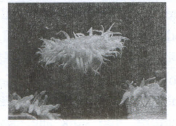MABS Institution
11th Biology Monthly Test - 1 ( Bio - Zoology - Kingdom Animalia )-Aug 2020
-
-
-
-
-
-
-
-
-
-
-
-
-
-
-
-
Name the larva of molluscs?
-
What are the advantages of bilateral symmetrical animals?
-
Distinguish between parazoa and Eumetazoa.
-
What are tongue worms
-
Write the functions of the following: (i) Ctenidia, (ii) Ospharidiam.
-
What is the difference in the blood of Annelids and Vertebrates?
-
Mention the advantages of a true coelom.
-
List out the diagnostic features of phylum Ctenophora.
-
Compare the advantages and disadvantages of direct and indirect development,
-
-
Write the general characters of urochordates or tunicates.
-
Match the following.
1) Parenchymula - (a) Cnidaria
2) Trochophore - (b) Amphibia
3) Tornaria - (c) Annelida
4) Veliger - (d) Cyclostomata
5) Planula - (e) Mollusca
6)Tadpole - (f) porifera
7) Ammocoete - (g) Hemichordata
-
-
Name four different respiratory organs that you have come across in the animal kingdom. Give example.
-
Write the general characters of the phylum aschelminthes.
-
Write few examples for the phylum, Arthopoda.
-
Describe the special characteristic features of Aves.
-
Write the general characters of amphibians with some examples.
-
List the salient features of Mammala.
-
Could the number of eggs or young ones produced by an oviparous and viviparous female be equal? Why?
-
Write five characteristic features of phylum cnidaria?
-
Write a note on Hemichordata.
-
-
Give a brief account on the characters of Tunicates.
-
What are the general features of Reptilians?
-
-
List the three features common to all chordates at sometime in their life.
-
Observe the animal below and answer the following questions.

a. Identify the animal
b. What type of symmetry does this animal exhibit?
c. Is this animal Cephalized?
d. How many germ layers does this animal have?
e. How many openings does this animal's digestive system have?
f. Does this animal have neurons?
